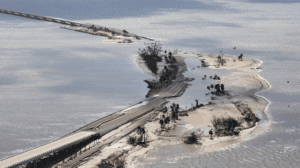
Damage caused by storm surge along the Sanibel Causeway in Florida during Hurricane Ian in September of 2022. (Image credit: Getty images)
NOAA upgraded its Probabilistic Storm Surge (P-Surge) model—the primary model for predicting storm surge associated with high-impact weather like hurricanes and tropical storms—to version 3.0. This upgrade advances storm-surge modeling and forecasting for the contiguous United States (CONUS), Puerto Rico and the U.S. Virgin Islands, and comes just in time for the 2023 hurricane season beginning on June 1 and running through November 30.
The upgrade includes a number of new capabilities that will help forecasters better understand the risk of storm surge, such as:
There are no upcoming events.
